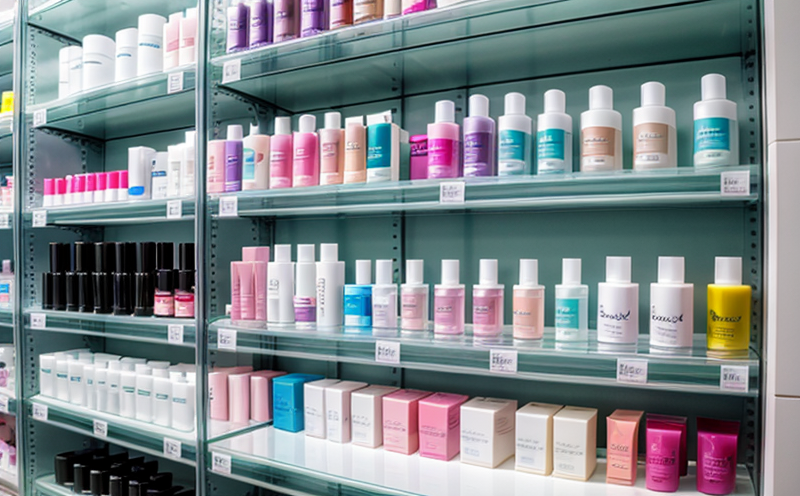SPF Retention Stability Testing in Sunscreens
The sun protection factor (SPF) of a sunscreen is one of its most crucial metrics. SPF retention stability testing ensures that the product maintains its protective capabilities over time, which is vital for consumer safety and satisfaction. This test evaluates how well the sunscreen retains its SPF value after exposure to environmental factors such as sunlight, humidity, and temperature changes.
SPF retention stability testing involves several steps aimed at simulating real-world conditions that a sunscreen might encounter during storage and use. The primary goal is to assess whether the product's SPF remains consistent with claims made on the label. This testing method helps manufacturers ensure compliance with regulatory standards while also protecting consumers from potential health risks associated with ineffective sunscreens.
During this process, samples are exposed to various environmental stressors that mimic real-life scenarios encountered by consumers when applying and storing sunscreen products. These include direct sunlight exposure, artificial light sources like xenon lamps, temperature cycling between extreme temperatures (e.g., 40°C/104°F and -20°C/-4°F), relative humidity fluctuations ranging from 5% to 95%, and even prolonged contact with water during swimming or sweating.
After simulating these conditions over a specified period, the SPF value of each sample is measured using standardized procedures based on international standards such as ISO 21362:2018 for sunscreen products. The results are then compared against initial measurements taken before any exposure to ensure that there has been no significant reduction in effectiveness.
SPF retention stability testing plays a critical role in maintaining consumer trust and confidence in sun protection products. By demonstrating consistent SPF levels throughout the product lifecycle, companies can reassure consumers about their safety and efficacy. This not only enhances brand reputation but also contributes to better public health outcomes by promoting effective sun protection practices.
- Direct sunlight exposure mimics outdoor activities where people apply sunscreen.
- Artificial light sources simulate indoor lighting conditions that might affect the product during storage.
- Temperature cycling reflects seasonal variations in temperature affecting how long a consumer keeps their sunscreen at home.
- Relative humidity fluctuations account for different climates and environments where sunscreens are used.
Why It Matters
The importance of SPF retention stability testing cannot be overstated. Consumers expect their sunscreen to provide consistent protection throughout its shelf life, especially given the frequent use and varying environmental conditions they encounter. Ensuring that a product maintains its SPF level is essential for both consumer safety and regulatory compliance.
From a manufacturer's perspective, conducting thorough stability testing ensures product quality and reliability, reducing the risk of recalls or lawsuits due to ineffective sunscreens. It also helps in maintaining brand reputation by delivering products that meet high standards set by industry regulations.
In terms of public health, consistent SPF retention is crucial because it directly impacts how effectively individuals are protected from harmful UV radiation. Without proper protection, consumers may face increased risks of skin cancer and premature aging. Therefore, reliable SPF retention testing serves as a critical component in safeguarding public health.
Benefits
The benefits of conducting SPF retention stability testing are multifaceted. For manufacturers, it provides valuable insights into the performance characteristics of their products under realistic conditions, enabling them to make informed decisions regarding formulation adjustments and packaging improvements.
- Enhanced Product Quality: By ensuring consistent SPF levels across all batches, companies can enhance overall product quality, leading to higher customer satisfaction rates.
- Regulatory Compliance: Meeting strict regulatory requirements is essential for market access and ongoing business operations. Stability testing helps meet these standards, avoiding costly penalties or delays in launching new products.
- Informed Decision-Making: Data obtained from stability tests can guide decisions related to raw material selection, formulation optimization, and packaging design.





